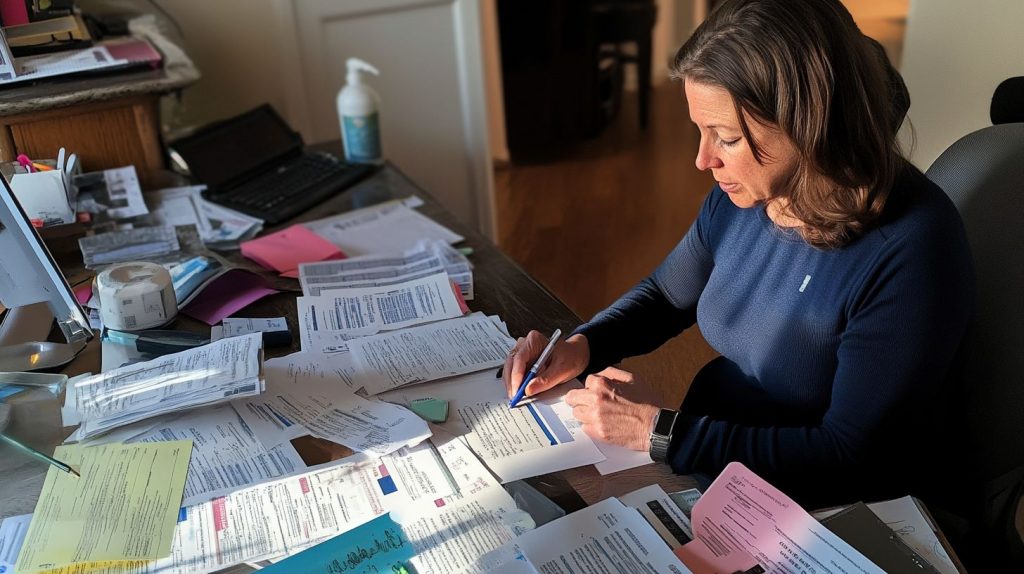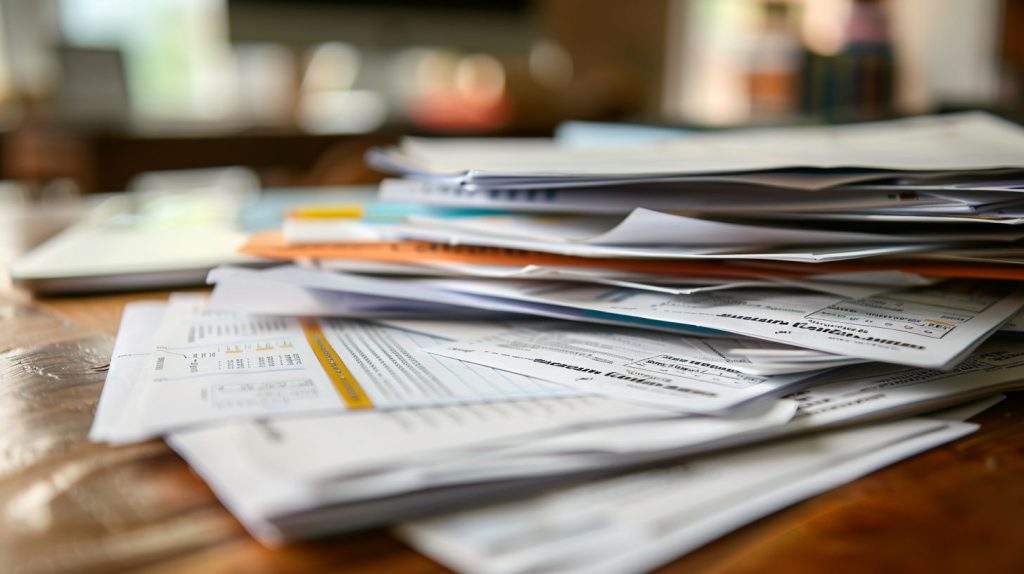Struggling with overwhelming debt is a common problem many people face daily. Debt relief programs offer a lifeline by reorganizing your financial obligations to make them more manageable.
This article will guide you through understanding how these programs work and who is eligible, providing options from debt settlement to bankruptcy alternatives. Find clarity and solutions ahead.
Key Takeaways
- Debt relief programs help people manage overwhelming debts through plans like debt management, settlement, or bankruptcy.
- To qualify for most debt relief options, individuals need to meet specific financial criteria, including income levels and credit scores.
- Scams exist in the debt relief space, so it’s important to research companies thoroughly and avoid those that require large payments upfront.
- Programs such as government-sponsored ones or reputable companies like National Debt Relief can offer legitimate assistance.
- Choosing the right path depends on your unique financial situation; careful assessment and professional advice can guide this decision.
Types of Debt Relief Programs
Debt relief programs help people manage their debts. They include options like managing payments, settling debts for less, or declaring bankruptcy.
Debt management plans
A debt management plan (DMP) allows individuals to pay off their unsecured debts in full. This often occurs at reduced interest rates or through lower monthly payments, making repayment more manageable.
Credit counseling agencies typically help set up these plans by negotiating with creditors on behalf of the debtor. They work to create a structured payment schedule that fits within the individual’s budget while ensuring all debts are repaid over time.
This option is particularly beneficial for those facing financial hardship but who still want to avoid bankruptcy. By entering a DMP, consumers can regain control of their finances and work towards becoming debt-free without relying solely on third-party debt settlement companies or other more drastic measures.
Understanding your specific situation will aid in determining if a DMP is the best route forward.
Next, consider how you might qualify for various debt relief programs available today.
Debt settlement
Debt settlement is a process where individuals work with debt relief companies to negotiate lower balances on their debts, often targeting unsecured debts like credit card debt. These companies can communicate directly with creditors, aiming to reduce the total amount owed for a lump-sum payment or a series of smaller payments.
It offers an alternative option for those facing financial hardship assistance and helps avoid bankruptcy. This method may positively impact your financial situation by making repayment more manageable, although it can also affect your credit score.
Many Canadians explore debt forgiveness eligibility through this route due to its potential benefits compared to traditional approaches. Ensuring that you select reputable debt relief options is essential, as unscrupulous firms exist in this space.
Understanding the nuances of debt negotiation will guide you toward effective solutions tailored to your needs and circumstances. The next section will discuss how to qualify for various debt relief programs.
Bankruptcy
Bankruptcy is a legal process that can help individuals manage overwhelming debt. It allows for the discharge of certain debts, providing a fresh start for those struggling financially.
In Canada, this option may involve filing either a consumer proposal or personal bankruptcy. A consumer proposal enables borrowers to negotiate with creditors to repay a portion of their debts over time, while personal bankruptcy involves liquidating assets to pay off unsecured debt.
Filing for bankruptcy can impact credit scores significantly and may require individuals to undergo credit counseling sessions. It’s crucial to understand the long-term consequences before choosing this path.
Many Canadians turn to government-sponsored programs or seek assistance from for-profit companies like National Debt Relief and Freedom Debt Relief when considering bankruptcy as part of their overall strategy for debt relief and repayment.
Qualifying for Debt Relief Programs
To qualify for debt relief programs, you must meet specific financial criteria. Assess your situation carefully to find the best plan that suits your needs.
Financial eligibility requirements
Financial eligibility for debt relief programs often includes reviewing credit reports and scores, as well as assessing income levels. Programs like government-sponsored credit card debt relief typically require applicants to demonstrate financial need.
Debt settlement companies may also evaluate your ability to repay unsecured debts before entering you into a program. Understanding these criteria is essential for determining whether options such as debt management plans or credit card debt consolidation are suitable for your situation.
Always ensure that the chosen pathway aligns with your financial capabilities to avoid potential pitfalls associated with high levels of unsecured debt repayment.
Determining the best option for your situation
Choosing the right debt relief program depends on your unique financial situation. Each option—debt management plans, debt settlement, and bankruptcy—offers different benefits.
Debt management plans allow full repayment of unsecured debts but often come with reduced interest rates or lower monthly payments. In contrast, debt settlement may help you negotiate a lower balance through companies like National Debt Relief or Freedom Debt Relief.
Understanding these variations can significantly impact your journey to financial stability.
Evaluating eligibility is crucial in this process. A thorough assessment of credit reports and income helps tailor the best approach. Government-sponsored programs for credit card debt relief provide alternatives as well.
Always be vigilant about potential scams from for-profit companies while seeking options like loan forgiveness or credit card debt settlement to ensure that you make informed choices without jeopardizing your finances further.
Beware of debt relief scams
Scams in debt relief can exploit vulnerable individuals. Many for-profit companies claim they can eliminate your debt quickly, often charging high fees upfront. Legitimate programs work with creditors to renegotiate or change the terms of a debt without requiring large payments before services are provided.
It’s crucial to research any company offering credit card debt relief programs thoroughly and check their credentials. Be cautious of promises that sound too good to be true, as these may lead to more financial trouble.
Understanding how to qualify for genuine debt relief programs will help you navigate this complex landscape effectively.
Conclusion
Understanding debt relief programs can provide a viable path to financial freedom. Options like debt management, settlement, and bankruptcy each have unique benefits and qualifications.
Research thoroughly before deciding which option fits your needs. Avoid scams by seeking reputable companies or government-sponsored programs. Take control of your financial situation today and explore the support available for managing your debts effectively.
FAQs
1. What are debt relief programs and how do they work?
Debt relief programs, which can be offered by for-profit companies or government-sponsored programs, provide ways to help people deal with large amounts of debt.
2. Who qualifies for these debt relief programs?
Qualification criteria vary between different types of debt relief programs. It often depends on the amount of your debts and your ability to repay them.
3. How do I know if a program is government-sponsored or from a for-profit company?
You can find out who sponsors a program by researching it online or contacting the organization directly. Government-sponsored programs usually have .gov in their web address.
4. Are all debt relief programs safe to use?
Not all! Some might not be trustworthy, especially some for-profit companies’ offerings. Always research thoroughly before joining any program.








